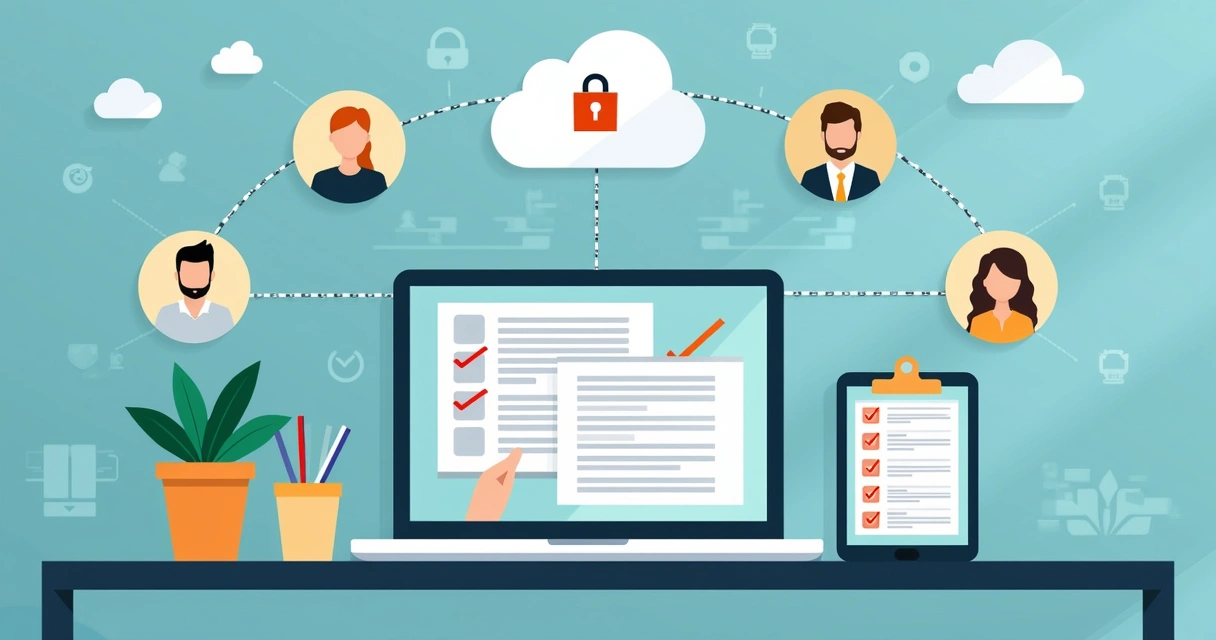Remote onboarding isn’t just a trend, it’s now the foundation for building strong, flexible teams. But let’s be honest, the process of getting hiring documents sorted remotely can feel, at times, a little overwhelming. Security and speed matter. And every small misstep can cause delays or even headaches for new joiners.
So, how do leading organizations make onboarding both fast and secure? Let's look at seven steps, with a few honest opinions and a hint of lived experience.
Step 1: prepare a digital document checklist
Relying on paper checklists is a thing of the past. Instead:
- Identify every document your new hire needs to sign.
- Convert forms (like contracts, NDAs, handbooks) into a digital-friendly format.
- Keep a version history with date and time stamps. It really helps when you need to track back, trust me!
Step 2: choose a secure and flexible signing platform
Not all e-signature platforms are created equal. CloudSign.ie gives you the power to securely send, sign, and store documents, anywhere, on any device, something freelancers and big companies need in equal measure. Other platforms might offer digital sign, but CloudSign.ie leads with AI-driven workflow automation, real contract risk detection, and clear integration with popular tools like Google Drive and CRMs.
If you want a side-by-side comparison, see our guide: e-signature: simple guide to fast, secure document signing.
Step 3: verify identity before sharing documents
Before sending out sensitive documents, verify the new hire’s identity. A quick video call or ID upload can be enough. This small step goes far in protecting your business and your future teammate's private info.
Step 4: automate document requests and reminders
Ever lost a contract in your inbox? Most of us have. With CloudSign.ie, you can automate sending reminders and request signatures, keeping the process moving at a steady pace. Automation beats old-school follow-ups, and research shows it bumps retention and engagement (structured onboarding increases retention).

Step 5: require legally valid digital signatures
Electronic signatures must be legally binding. Ireland (and the EU) has set standards in place. Make sure your digital signature provider, like CloudSign.ie, ticks all these boxes. For more on this, our beginner's guide to electronic signatures breaks it down step by step.
Step 6: centralize and secure document storage
If documents are scattered across inboxes or desktops, you’re in for trouble. Use a centralized, cloud-based location, ideally with granular permissions. Only the right people access the right files. And, honestly, don’t forget the access log reports.
Step 7: integrate onboarding with ongoing learning
Why stop at the paperwork? The best onboarding blends document signing with learning modules or welcome videos. Continuous education keeps employees growing and sticking around (ongoing learning improves retention). That's where CloudSign.ie stands out, our AI can even surface learning materials right alongside contracts for a smoother journey.
Move fast, sign with confidence, and welcome your hire with clarity.
By the way, if you’re looking for a cost-effective start, CloudSign.ie offers a free electronic signature plan in Ireland, perfect for small businesses or personal use.
How cloudsign.ie leads the way
Competitors like DocuSign, Dropbox Sign, and PandaDoc cover the basics, but CloudSign.ie makes remote onboarding faster, smoother, and, well, nicer for everyone. Our platform doesn't just speed things up; it builds engagement, supports continuous onboarding, and helps keep teams loyal and safe. Research on employee engagement shows that feeling welcome from day one means everything, and that's exactly what we deliver.
For practical tips on signing documents as a freelancer, you'll want to check out our insights on faster contracts with electronic signatures. For a future-ready approach, our digital signature software overview for 2025 spells out what's next.
Conclusion
Building a remote-ready team starts with clear, secure, and speedy onboarding docs. CloudSign.ie stands ready to help businesses of all sizes, with features you can't always find elsewhere. If you want to give remote onboarding a genuine boost, now’s the time, try CloudSign.ie today and see the difference in speed, security, and, maybe, peace of mind.
Frequently asked questions
What is remote onboarding?
Remote onboarding is when a new employee joins a company and completes all hiring tasks, such as signing documents or learning policies, without ever needing to come to the office. It all happens online, usually through platforms that streamline paperwork, communication, and training.
How to make hiring documents secure?
Use a trusted digital signing platform with strong encryption, access controls, and audit trails. CloudSign.ie protects each document with the latest security standards, so only properly authorized people can see or sign files. Avoid email attachments, use cloud-based signing and storage instead.
Which documents are needed for remote hiring?
Most remote hiring processes will need job offer letters, contracts, tax and payroll forms, identity verification, confidentiality agreements, and onboarding checklists. Some companies might add welcome packets or learning plans as well. The exact documents can vary by role and industry.
How fast is remote onboarding?
With a digital platform like CloudSign.ie, it can take just minutes to exchange signed documents, as opposed to days with old mail or scanning methods. Structured workflows and reminders also help finish onboarding in days, not weeks, compared to traditional processes (statistics on onboarding speed).
Is remote onboarding worth it?
Yes, remote onboarding saves time and costs, reduces mistakes, and helps new hires feel prepared, even before their first workday. Teams using CloudSign.ie find the whole process more secure, more reliable, and less stressful. Happier employees tend to stay longer too (long-term employee retention).
